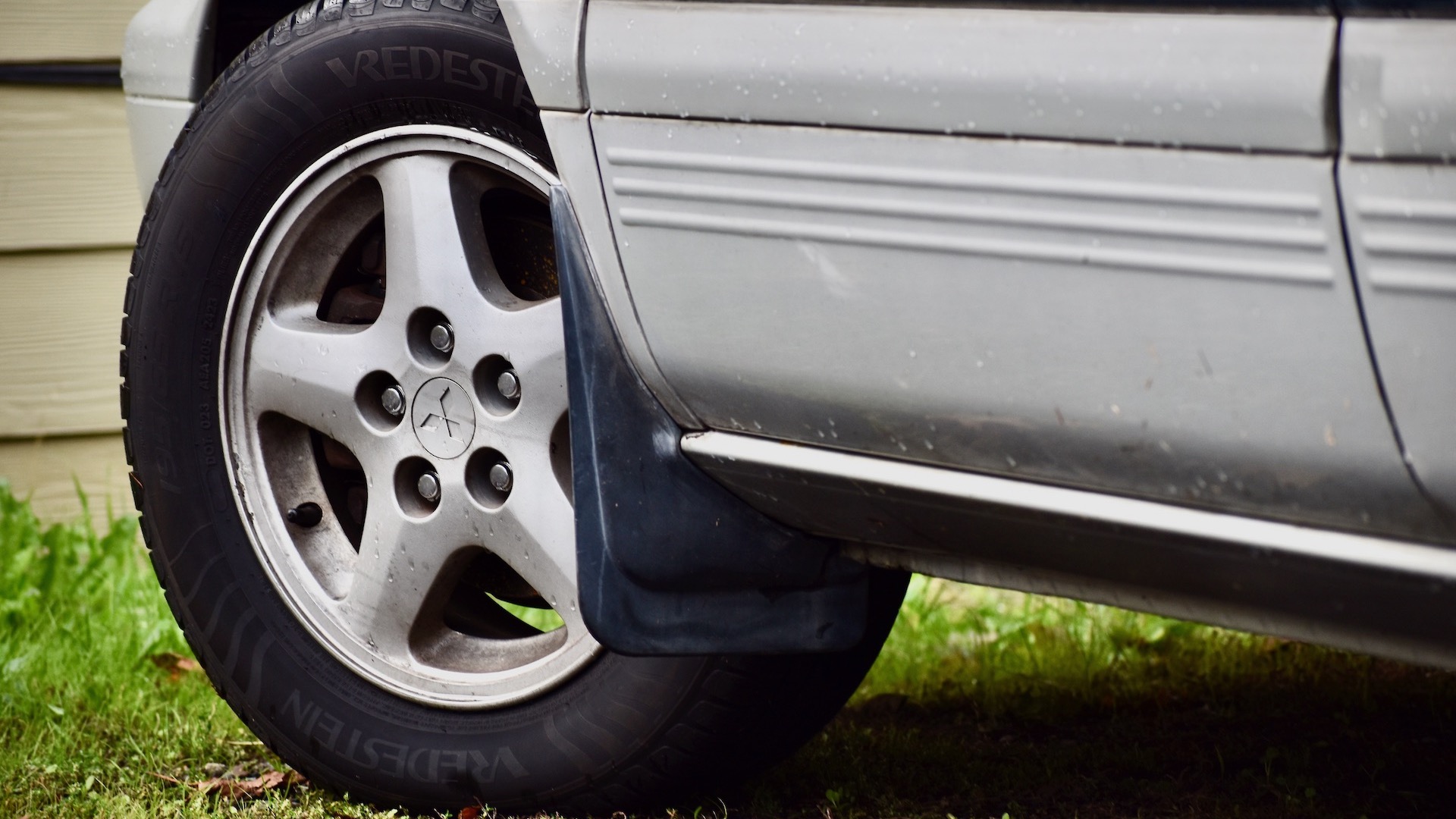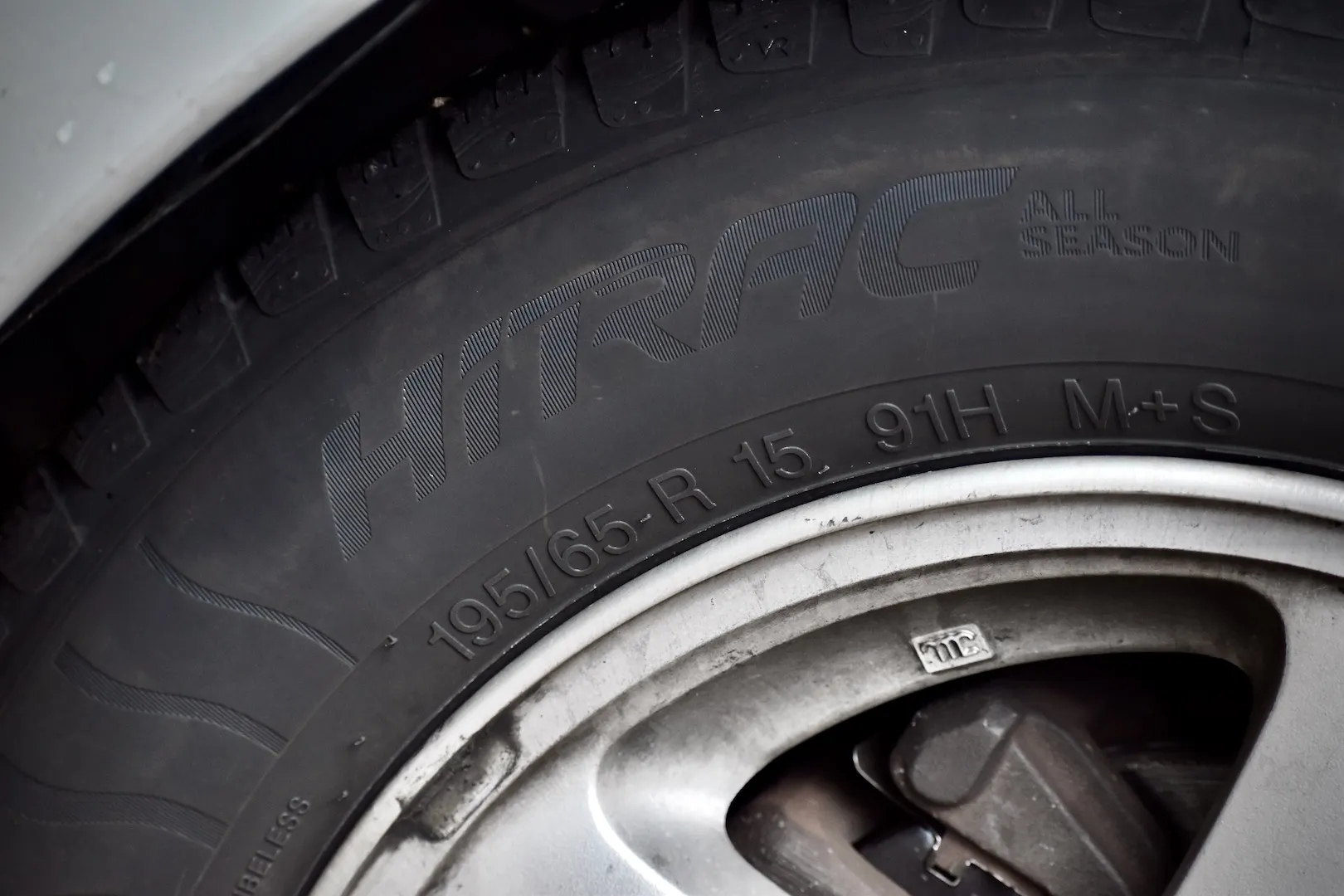

We may earn revenue from the products available on this page and participate in affiliate programs. Learn more ›
Replacing tires was one of the first big maintenance items I faced after buying my 1996 Mitsubishi Chariot Resort Runner GT. Picking the right rubber, however, was tricky because not many people are driving performance minivans. Let alone ones that are nearly three decades old from Japan.
What I needed was something grippy, yet comfortable, quiet, and good in all weather—particularly rain, now that I live in Oregon. And that’s the main reason I decided to try the Vredestein HiTrac All-Season, a supposed wet-weather all-star, even if it meant accepting some compromises elsewhere. But so far, the surprises have only been pleasant.

So What Are They?
Vredestein bills the HiTrac as a one-tire solution for a family sedan, or even a performance car. It specifically touts the HiTrac’s comfort and wet-weather performance, while claiming good balance in all other aspects. It even has an impressive 700 treadwear rating, though that could mean trading performance for longevity. I’d rather have the former on my Mitsubishi, one of the weirder branches on the legendary Lancer Evolution’s family tree, but if I can trust it while ferrying family, or trying to pull a four-wheel drift, I’ll be over the moon.
Coming away from installation and getting on the highway, I immediately noticed that road noise was reduced from the tires they replaced. They were very old tires though. Old enough that most of my colleagues yelled at me for even driving on them. Both were the same size at 195/65R15, and while the Vredesteins’ sidewalls don’t bow out as much, they don’t seem to ride any harsher.
Low road noise and ride quality count for a lot in a car that I consider my adventure wagon, and they’ll pay dividends on longer drives.


As for performance, I’m still feeling out the car’s capabilities, as the old tires weren’t even worth trying to have fun on. And despite being of the Evo lineage, I don’t have the power to spin wheels in the dry. Wet weather or snow, I have yet to see, so I’ll report back on that. And the heavily boosted power steering leaves it unclear whether I’ll be able to feel the front axle more long-term.
I can tell you that I know what bad all-season performance tires are like, and it doesn’t apply to these Vredesteins.
I have a set of Nankang Noble Sport NS-20s on my 1991 Toyota MR2 Turbo, and they’re awful. Poor in the dry and worse in the wet, with little traction, bad feedback, and fast wear. Conventional logic dictates this is because all-season tires are no-season tires. Too compromised to be great in any conditions. The HiTrac All-Seasons feel far, far better.
Swooping through corners in dry weather, I haven’t yet been able to make the HiTracs squeal. Clearly, the solution is to go faster, but the best roads around me don’t have great visibility and I don’t want to stuff my radiator full of venison. Even so, the tires’ braking performance leaves me with no excuse, as I have to stomp on the pedal like an empty can to make the ABS kick in. That’s even in the rain, where things get even better.

There’s Still More to Learn
It may sound like hyperbole, but while charging up a twisty hill last weekend, it felt like I may as well have been on a dry road. I went looking for the limits of front traction, only to find it was beyond how hard I was willing to push the car. No scrub, no rear end stepping out, no worries whatsoever. If this is how these Vredestein HiTrac All-Seasons do in the wet, then I have a lot of fun driving ahead of me this winter.
I’ll have to report back in my long-term review how they handle beyond the limit, by which point I hope—no, expect—to have drifted some snowy hairpins. That may be how I find out if my rear differential is an LSD, too. And if it is, expect the hottest drift montage you’ve ever seen from a minivan.